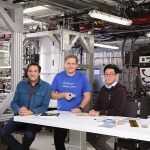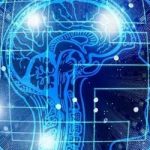Quantum News Briefs November 15: RPI president says CHIPs Act will spur quantum computing, next-gen tech; China Daily: Quantum computing patents surge in China; Can post-quantum encryption save the internet? + MORE

Quantum News Briefs November 15 opens with interview of Rensselaer Polytechnic Institute’s new president, Martin Schmidt who stresses the CHIPS act will spur quantum computing, followed by China Daily’s article detailing the “Surge of Quantum Computing Patents in China”. Third is a discussion “Can Quantum Computing Save the Internet?” + MORE.
RPI president says CHIPs Act will spur quantum computing, next-gen tech
 Rensselaer Polytechnic Institute’s new president, Martin Schmidt, believes new investments by the US government will bolster efforts to reshore chip development and production, and generate new, bleeding-edge processors. Quantum News Briefs summarizes a wide-ranging, lengthy interview by Computerworld’s Lucas Mearian.
Rensselaer Polytechnic Institute’s new president, Martin Schmidt, believes new investments by the US government will bolster efforts to reshore chip development and production, and generate new, bleeding-edge processors. Quantum News Briefs summarizes a wide-ranging, lengthy interview by Computerworld’s Lucas Mearian.
The CHIPS and Science Act had attracted the biggest manufacturers of semiconductors to commit to building fabrication plants in various parts of the United States, essentially “reshoring” an industry the nation once dominated. The measure is a $52.7 billion package of subsidies and grants to the US semiconductor manufacturing industry aimed at reducing US dependency on Asia-based silicon makers.
Schmidt explained, “The CHIPs Act is having its intended impact in terms of unlocking capital investments to create fabs in the US, based on what we’ve seen thus far. I’d say the scale of the investment in R&D, particularly in universities, is very meaningful. It’s going to provide a lot of resources to universities that in some respects have struggled to attract those resources — particularly to have facilities to do some of the more advanced research that will lead to new production faculties.
When you say co-investments, are you talking about businesses or other government agencies? “I think you’ll see some of the federal agencies funding some real leading-edge ideas in quantum computing and perhaps some other areas. But, I think because there’ll be more talent, faculty, and students working in these areas, companies will naturally come to universities for opportunities to work in partnership with the government or in ways that are complementary to the research activities that are being enabled by federal investments.”
Are you planning to change your curriculum to address the future needs of the semiconductor industry? “I don’t know that the curriculum will change dramatically. I think we’ll need to be prepared to educate more people. But as these new technology vectors begin emerging in quantum or optical computing, we may find it necessary to add more advanced courses to train people. Click here to read the original article, well worth the time to read.
*****
China Daily: Quantum computing patents surge in China

Chinese companies’ invention patent applications in the field of quantum computing grew from 137 as of September 2020 to 804 by October 2022, according to the latest Global Quantum Computing Technology Patent Filings Ranking List (Top 100). Quantum News Briefs summarizes Zhu Lixin’s November 14 article in ChinaDaily.
The list was released in late October by the innovation index researcher incoPat and intellectual property media IPR Daily. The applications in quantum computing it mentioned were publicly available worldwide as of Oct 18.
The top 100 companies on the list are mainly from 18 countries and regions, with the United States accounting for 40 percent, China for 15 percent, and Japan for 11 percent.
With 1,323 patents filed, tech giant IBM from the United States ranked the first in computing invention patent applications.
The US internet search giant Google and Canadian quantum computing company D-Wave ranked second and third with 762 patents and 501 patents, respectively.
Among the top 100 companies, 15 were from the Chinese mainland. Click here to read the original ChinaDaily article in-entirety.
*****
Can post-quantum encryption save the internet?
 The announcement that quantum computers capable of harnessing the mysteries of quantum mechanics to achieve feats of computation vastly superior to its silicon-based antecedents had broken RSA, DES or AES would render vast swathes of the internet insecure overnight. Quantum News Briefs summarizes TechMonitor’s indepth discussion of post-quantum encryption algorithms by features editor Greg Noone.
The announcement that quantum computers capable of harnessing the mysteries of quantum mechanics to achieve feats of computation vastly superior to its silicon-based antecedents had broken RSA, DES or AES would render vast swathes of the internet insecure overnight. Quantum News Briefs summarizes TechMonitor’s indepth discussion of post-quantum encryption algorithms by features editor Greg Noone.
This moment is often referred to by cryptographers as ‘Q-Day,’ though when it’ll arrive is anyone’s guess. Some predict it’ll take as little as eight years before conventional cryptography will be broken by a quantum computer, while others insist we still have a few decades before any quantum advantage well and truly breaks the internet. According to mathematicians like Dustin Moody, however, we may not even know the precise moment when conventional encryption is cracked. “It could be that it’s happening behind the scenes and we don’t know it for a while,” says the mathematician and expert in all things quantum at the US National Institute for Standards and Technology (NIST.)
Eventually, post-quantum encryption algorithms will supplant their RSA and DES equivalents – a more elegant solution, experts like IBM’s Scott Crowder argue, than quantum key distribution (QKD), which harnesses the mysteries of quantum mechanics to physically secure communications but requires massive investment in new ground infrastructure and satellites.
The emergence of the post-quantum threat signals the end of what was an effective solution to the problem of securing information online. Several institutions have already begun preparing for the post-quantum future. In May, the Biden administration ordered federal agencies to begin preparing plans to secure their networks using post-quantum encryption algorithms, in addition to directing NIST to establish a working group to prepare the private sector for the road that lies ahead. They’ll be working alongside a growing number of start-ups like QuSecure and various tech giants that offer their own post-quantum preparation services.
“Those big companies – the Google’s, Microsoft, IBM, Intel – they’re all very well aware of the quantum threat,” says Moody.
Meanwhile, the world awaits NIST’s final judgement about post-quantum encryption standards. But, he adds, businesses shouldn’t wait to ready themselves for what lies ahead. “Learn all you can,” says Moody. Click here to read original article.
*****
New measurements quantifying qudits provide glimpse of quantum future
 A multi-institutional team has developed an effective method for measuring high-dimensional qudits encoded in quantum frequency combs, a type of photon source, on a single optical chip. Quantum News Briefs summarizes from news provided by NSF.
A multi-institutional team has developed an effective method for measuring high-dimensional qudits encoded in quantum frequency combs, a type of photon source, on a single optical chip. Quantum News Briefs summarizes from news provided by NSF.
Although the word “qudit” might look like a typo, this lesser-known cousin of the qubit, or quantum bit, can carry more information and is more resistant to noise — key qualities needed to improve the performance of quantum networks, quantum key distribution systems and, eventually, the quantum internet.
Classical computer bits categorize data as ones or zeroes, whereas qubits can hold values of one, zero or both — simultaneously — owing to superposition, a phenomenon that allows multiple quantum states to exist at the same time. The “d” in qudit stands for the number of different levels or values that can be encoded on a photon. Traditional qubits have two levels, but adding more levels transforms them into qudits.
Researchers at the Oak Ridge National Laboratory, Purdue University and the Swiss Federal Institute of Technology Lausanne fully characterized an entangled pair of eight-level qudits, which formed a 64-dimensional quantum space — quadrupling the previous record for discrete frequency modes. The U.S. National Science Foundation-supported results were published in Nature Communications.
“We’ve always known that it’s possible to encode 10- or 20-level qudits or even higher using the colors of photons, or optical frequencies, but the problem is that measuring these particles is very difficult,” said Hsuan-Hao Lu of ORNL. “We found an efficient and novel technique that is relatively easy to do on the experimental side.”
*****
Sandra K. Helsel, Ph.D. has been researching and reporting on frontier technologies since 1990. She has her Ph.D. from the University of Arizona.





















